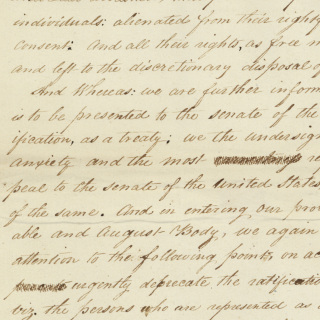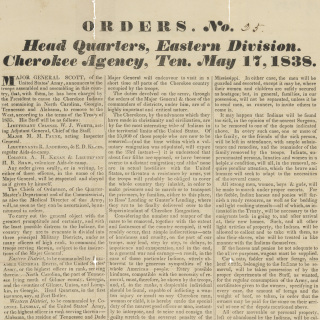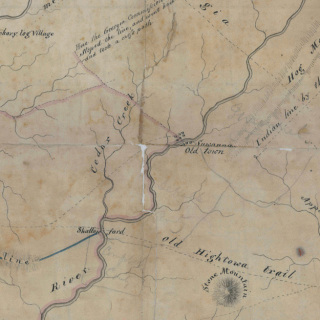Cherokee Removal 1835
For years the Cherokee resisted moving from the homeland, to which they felt spiritually connected. Growing impatient, President Jackson authorized negotiations with a fringe group of Cherokee that felt removal was inevitable. The resulting Treaty of New Echota exchanged money and lands in Oklahoma for all Cherokee territory east of the Mississippi.
Despite protests that the treaty was invalid because it was not authorized by the entire Cherokee Nation, the Government began to drive the Cherokee from their homes. The forced march, remembered today as the “Trail of Tears,” was a 1,000-mile journey that left 4,000 Cherokee—one quarter of the population of the tribe—dead along its path. Other southeastern tribes—the Choctaw, Chickasaw, Creek, and Seminole—also experienced great suffering and fatalities on the Trail of Tears.




